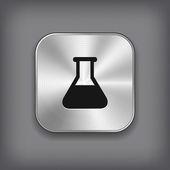We present a phase field-based electro-chemo-mechanical formulation for modelling mechanics-enhanced corrosion and hydrogen-assisted cracking in elastic-plastic solids. A multi-phase-field approach is used to present, for the first time, a general framework for stress corrosion cracking, incorporating both anodic dissolution and hydrogen embrittlement mechanisms. We numerically implement our theory using the finite element method and defining as primary kinematic variables the displacement components, the phase field corrosion order parameter, the metal ion concentration, the phase field fracture order parameter and the hydrogen concentration. Representative case studies are addressed to showcase the predictive capabilities of the model in various materials and environments, attaining a promising agreement with benchmark tests and experimental observations. We show that the generalised formulation presented can capture, as a function of the environment, the interplay between anodic dissolution- and hydrogen-driven failure mechanisms; including the transition from one to the other, their synergistic action and their individual occurrence. Such a generalised framework can bring new insight into environment-material interactions and the understanding of stress corrosion cracking, as demonstrated here by providing the first simulation results for Gruhl's seminal experiments.
翻译:我们为模拟在弹性塑料固体中进行机械强化腐蚀和氢辅助裂缝而提出了一个以实地为基础的分阶段电-化学-机械制成,用于模拟在弹性塑料固体中进行机械强化的腐蚀和氢辅助裂裂缝。采用了多阶段法,首次提出了压力腐蚀裂裂缝总框架,其中既包括异性溶解机制,又包括氢融化机制。我们用有限元素方法来实施我们的理论,并将迁移组成部分、相位腐蚀状态参数、金属离子浓度、相位场骨折顺序参数和氢浓度作为主要的运动变量。代表案例研究的目的是展示该模型在各种材料和环境中的预测能力,与基准测试和实验观测达成有希望的协议。我们表明,作为环境的一种功能,所介绍的笼统的公式可以捕捉到异性溶解和氢驱动衰竭机制之间的相互作用,包括从一个向另一个组成部分的转变,其协同行动及其个别发生。这种普遍化的框架可以给环境-材料的相互作用和对压力凝结层的模拟结果提供新的了解和了解,这里所展示的为压力凝结结果。




